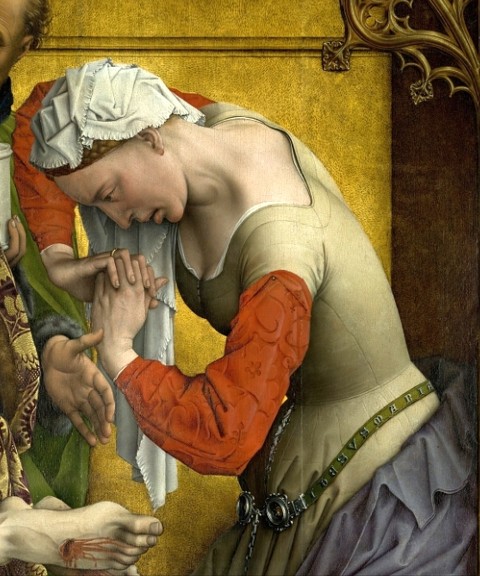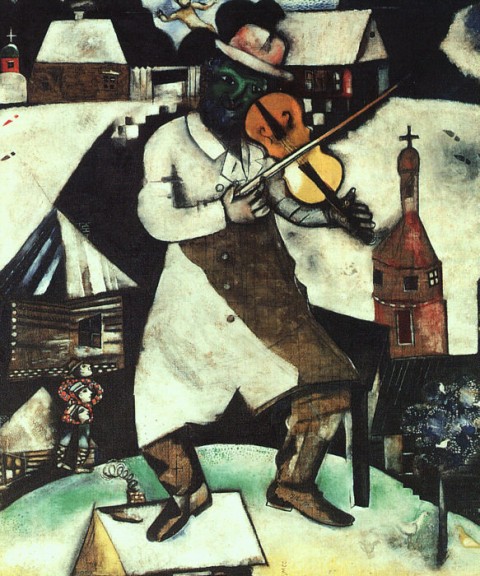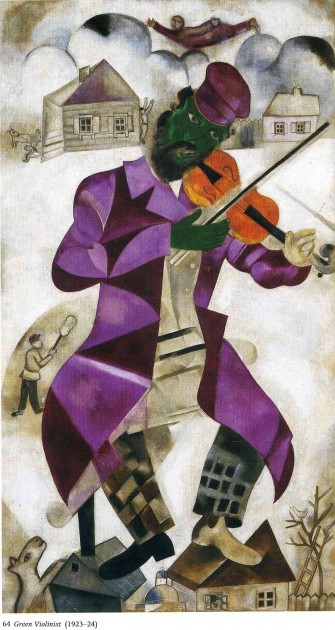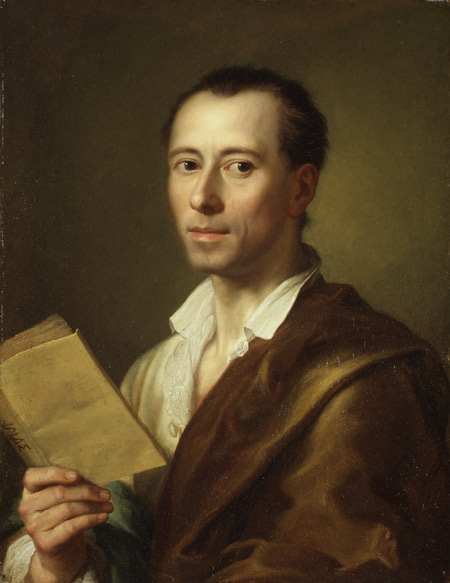Monday, December 17th, 2012
Bull’s-Head Rhyton: Blood and a Second Sacrifice
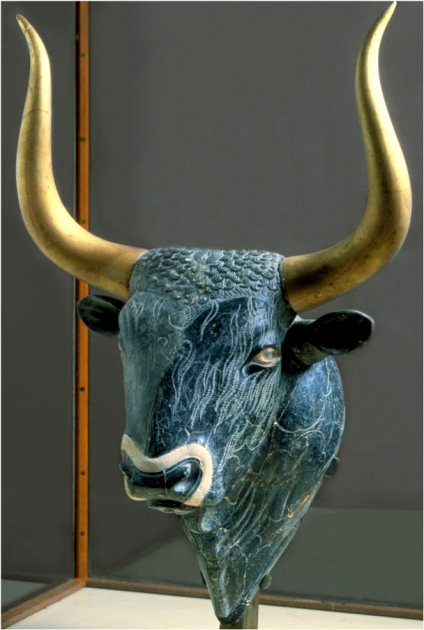
Bull's-Head Rhyton, c. 1550-1450 BCE (Minoan). Steatite with shell, rock crystal, and red jasper. The gilt-wood horns are restorations. Height 12"
This past quarter, one of my ancient students did a research project on the Minoan rhyton of a bull’s head (found at the Archaeological Museum in Crete). This student found an article by Jeremy McInerny in the Winter 2011 edition of Penn Museum’s Expedition magazine (.PDF link). This article, which is dedicated to the imagery of bulls and bull-leaping in the Minoan world, had some interesting information about this rhyton.
A rhyton is a type of vase or container which contains liquid that often is used in libation ceremonies. In the case of this bull, the rhyton is filled when liquid is poured into the bull’s neck. Then, during libation rituals, the bull’s head would be tilted forward so that liquid spew from the bull’s mouth. Although the liquid that filled rhytons is unknown (wine and water are some possibilities), I like another suggestion that McInerny mentions. He discusses how scholar Nanno Marinatos has argued that these containers actually held blood from sacrificial animals.1
McInerny explains further that these rhytons would have been like representations (or “portraits”) of the animals whose blood they contained. He writes, “The [rhytons of bulls’-heads] would have been the centerpiece of any gathering at which they were used. If such a gathering were the feast following a sacrifice at which the bull was consumed or its meat distributed, a formal libation from a vessel imitating the bull’s head would have constituted a ritual re-enactment of the bloodletting that began the sacrifice. The savagery of the animal’s slaughter was replaced with the formal dignity of the libation. The disposal of the rhyton after the ceremony amounted to a second killing.”2
The bull long fascinated ancient cultures, and I like this connection between the bull rhyton and animal sacrifices. I like to discuss with my students how this Minoan bull looks much more naturalistic than the representations of bulls which previously were created in the ancient Near East (such as the Sumerian bull’s head lyre). Given this argument about how rhytons were “portraits” of bulls that were symbolically slaughtered, I think that this emphasis on naturalism is quite appropriate. Perhaps the naturalism would have heightened not only the act of the “second” ritualistic killing, but also would have better represented and embodied the power of the bull itself.
1 Jeremy McInerny, “Bulls and Bull-Leaping in the Minoan World,” in Expedition 53, no. 3 (Spring 2011): 8. PDF of article available HERE
2 Ibid.
